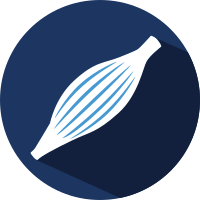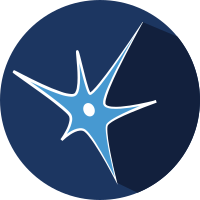Neuromuscular disorders can cause problems with:1

The muscle itself

Communication between the nerves and muscles

The nerves that control the muscles
Most neuromuscular disorders are genetic. This means that they are passed down through the family (inherited) or caused by new changes in a person’s genes.1
Types of neuromuscular disorders in children
Spinal muscular atrophy (SMA)
SMA is a condition that causes the nerves in the spine to die, leading to muscle weakness and problems with movement.1
Charcot-Marie-Tooth (CMT) disease
CMT disease is a group of illnesses that cause nerve damage, leading to muscle wasting, numbness, and deformity in the hands and feet.1
Congenital myasthenic syndromes (CMS)
CMS are a group of conditions where the nerves do not communicate correctly with the body’s muscles, causing muscle weakness, particularly in the face.1
Muscular dystrophy (MD)
MD refers to a group of neuromuscular disorders that cause muscle weakness and loss.2 There are over 30 types of MD including Duchenne MD, Becker MD, myotonic MD and limb-girdle MD.2 Depending on the type, MD varies in the muscles it affects, the type and severity of symptoms, and age at which the symptoms start.2,3
All forms of MD are progressive, which means they get worse over time.2
What is Duchenne muscular dystrophy (DMD)?
DMD is the most common and most severe form of MD.1,3 It is a type of MD characterised by muscle-wasting. DMD occurs due to an alteration in the dystrophin gene, resulting in the lack of a protein called dystrophin, which is required for healthy muscle growth.1 Learn more about Duchenne muscular dystrophy
What are the signs and symptoms of neuromuscular disorders?
The signs and symptoms of neuromuscular diseases depend on the type of disorder, and may be mild, moderate or severe. However, most neuromuscular disorders cause muscle weakness that worsens over time.2
The earliest and most common sign of neuromuscular disease is that a child does not reach developmental milestones when expected. These milestones include lifting their head, sitting, walking and talking.4–6
If you have concerns about your child’s development, talk to your doctor as soon as possible. In the rare situation that there is a problem, finding it early can ensure your child gets the expert care and treatment they may need.5–7
Understand how children should typically progress with the developmental milestone checklist
View the developmental milestone checklistAre neuromuscular disorders curable?
No, unfortunately neuromuscular diseases cannot currently be cured. However, treatment and supportive care may improve symptoms, increase mobility, and even increase life expectancy.1,8
Where can I find out more about other neuromuscular disorders?
Learn more about neuromuscular disorders by visiting the following websites:
- Muscular Dystrophy UK: https://www.musculardystrophyuk.org/
- Spinal Muscle Atrophy UK: https://smauk.org.uk/
- Charcot-Marie-Tooth Disease UK: https://www.cmt.org.uk/
- Myaware: https://www.myaware.org/
Could it be Duchenne muscular dystrophy?
Find out more about the some of the common signs.
Learn more

What is Duchenne muscular dystrophy?
A comprehensive overview of DMD.

Duchenne muscular dystrophy inheritance and causes
Review factors that influence the development of DMD.

Duchenne muscular dystrophy symptoms
Understand the key symptoms to be aware of in DMD.

The ultimate guide to Duchenne muscular dystrophy
Everything you need to know about DMD, all in one place.
References
1. Dowling JJ, et al. Am J Med Genet. 2018;176:804–841.
2. National Institutes of Health. About muscular dystrophy (MD). Available at https://www.nichd.nih.gov/health/topics/musculardys/conditioninfo [last accessed September 2022].
3. National Institutes of Health. What are the types and symptoms of muscular dystrophy (MD)? Available at https://www.nichd.nih.gov/health/topics/musculardys/conditioninfo/types [last accessed September 2022].
4. Birnkrant DJ, et al. Lancet Neurol. 2018;17:251–267.
5. Lurio JG, et al. Am Fam Physician. 2015;91:38–44.
6. Noritz GH, et al. Pediatrics. 2013;131:e2016–e2027.
7. van Ruiten HJ, et al. Arch Dis Child. 2014;99:1074–1077.
8. Flotats-Bastardas, Hahn A. Front Pediatr. 2020;8:583877.
© 2022 PTC Therapeutics.
GL-DMD-0655 | October 2022